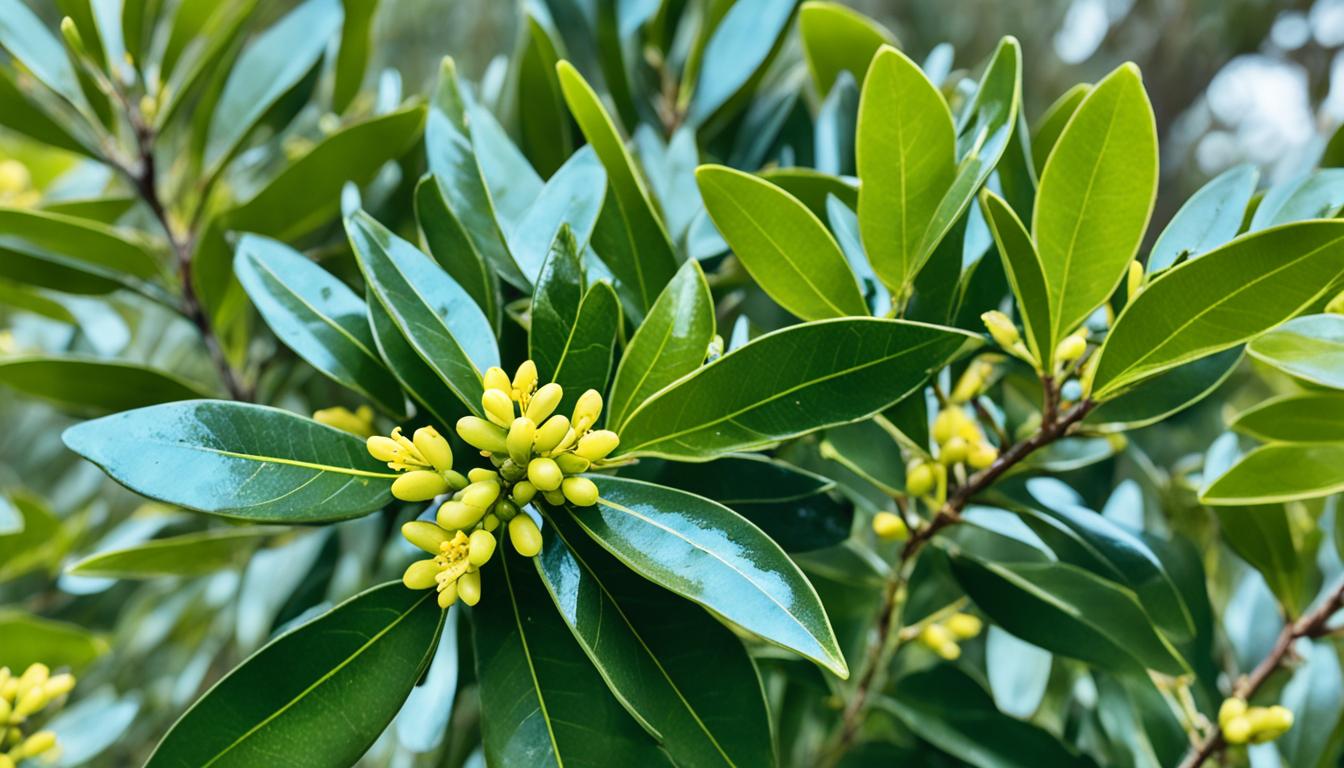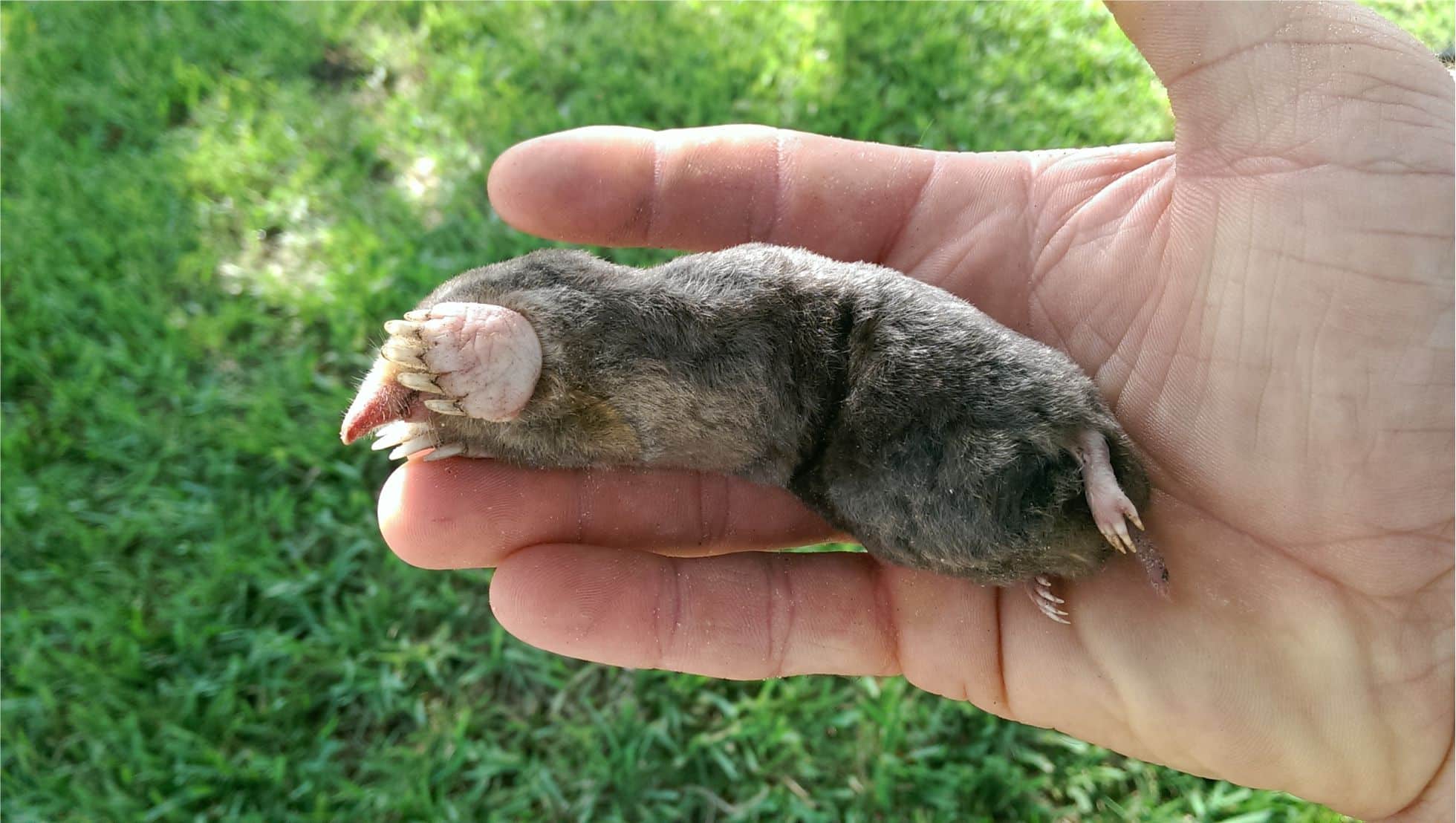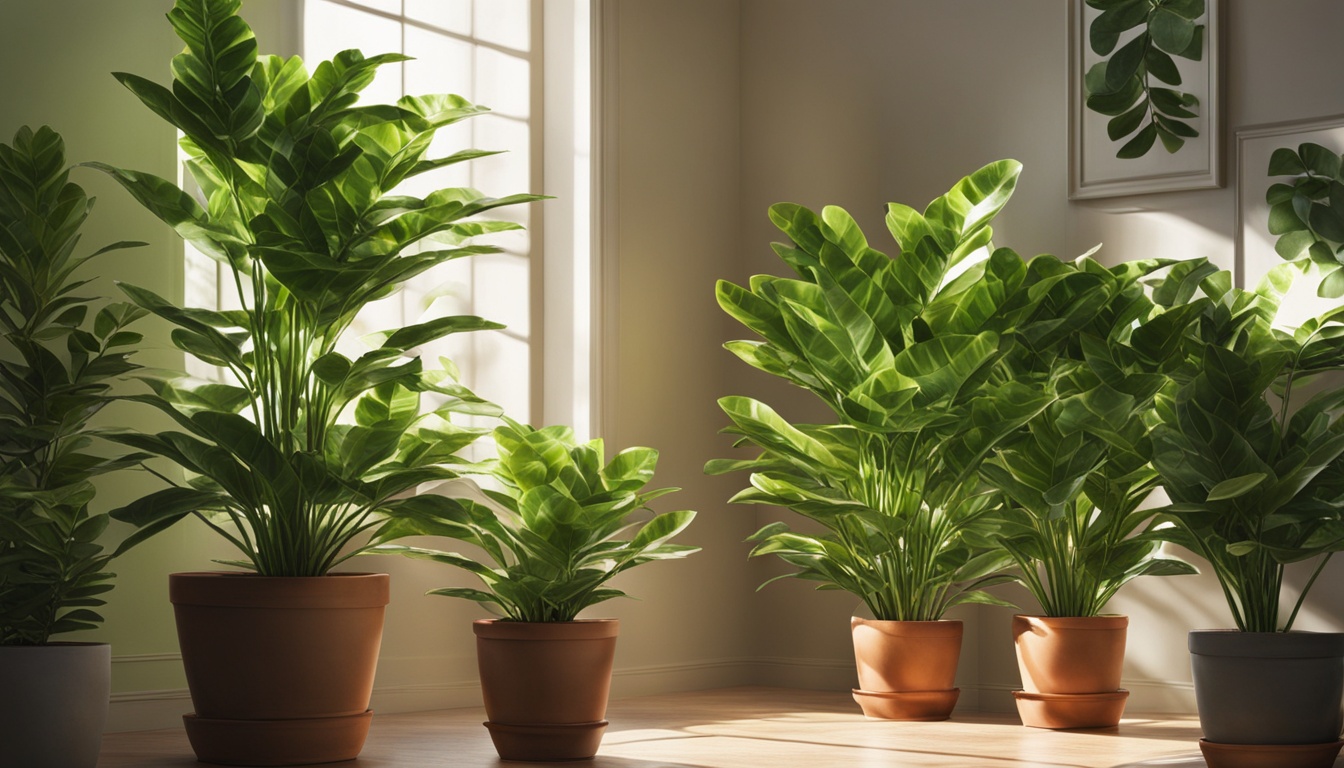Bay laurel, also known as the bay tree or bay leaf, is an evergreen native to the Mediterranean. Its aromatic leaves are a key ingredient in many dishes, like soups and stews. Growing a bay tree lets you enjoy fresh bay leaves anytime.
This guide will help you grow and care for a bay tree and show you how to use bay leaves.
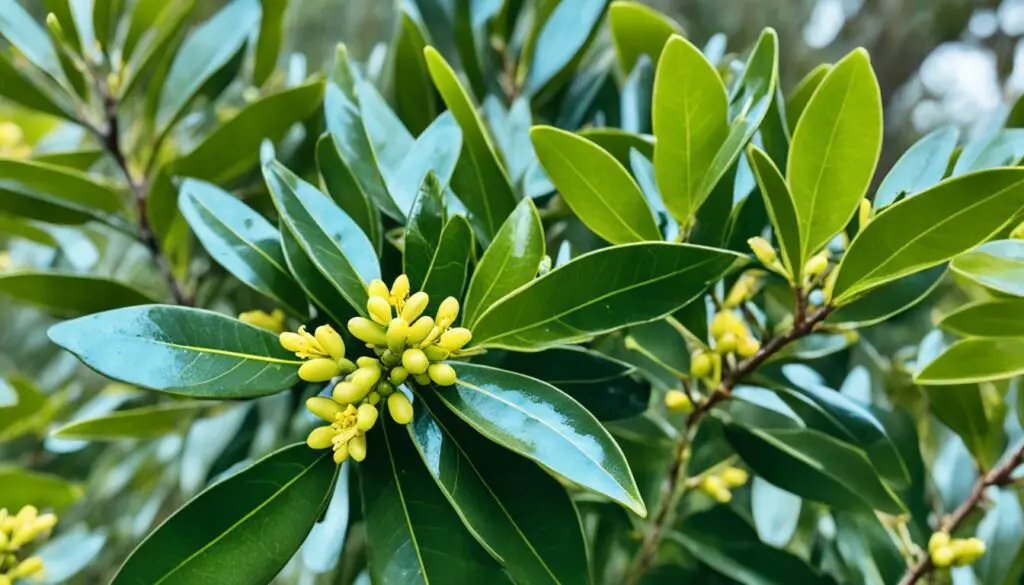
Key Takeaways
- Bay laurel trees need full sun and well-drained soil to grow well.
- It’s better to start with an established bay leaf plant than from seed for better results.
- Pruning and fertilizing are key to keeping bay trees healthy and shaped right.
- Bay laurel plants are toxic to pets, so keep them away from them.
- Bay leaves are useful in cooking and around the house, making them a great garden addition.
Introduction to the Bay Laurel Tree
The bay laurel (Laurus nobilis) is a slow-growing, evergreen tree or shrub. It can grow up to 30 to 60 feet tall. Its deep green, leathery leaves are a popular culinary herb. They add a unique, slightly peppery, and minty flavor to dishes.
Bay leaves are used in soups, stews, sauces, and marinades. They have been used for both cooking and medicine throughout history.
About Bay Leaves and Their Uses
Bay leaves come from the bay laurel tree. They add a deep flavor to savory dishes. But, they must be removed before serving because they can be bitter if eaten whole.
These leaves are essential in many classic dishes like bouillabaisse, cassoulet, and gumbo. They’re also used for their medicinal benefits, helping with digestion and reducing inflammation.
Historical and Cultural Significance
The bay laurel has a deep history and symbolism from ancient Greek times. It was linked with virtues like achievement, wisdom, victory, and everlasting love. The Romans also valued it, crowning their emperors with laurel wreaths.
The word “baccalaureate” comes from the Greek “laureate” and the Latin “bacca” for berry. Today, bay laurel is still important in Mediterranean cuisine and traditions.
“The laurel wreath is a symbol of victory and achievement, dating back to ancient Greece and Rome.
The bay laurel tree was associated with the god Apollo and was believed to have protective and medicinal properties.”
Growing Bay Leaves Outdoors
If you live in USDA hardiness zones 8-10, you can grow bay laurel outdoors all year. When planting a bay tree in the ground, pick a spot that gets full to partial sun and has good drainage.
Don’t put it where water collects, as bay laurel doesn’t like wet soil. It does well in slightly acidic to neutral soil, with a pH of 6.0 to 7.0. You can add compost or organic matter to the soil to help with drainage and nutrients.
Planting in the Ground
Choose a spot for planting bay leaves outdoors that gets at least 6 hours of sunlight daily. Bay laurel can grow up to 59 feet tall, so give it enough space.
Dig a hole a bit bigger than the root ball and add compost or manure to the soil. Plant the bay tree gently and water it well to help it settle.
Growing in Containers
Bay laurel can also thrive in containers, ideal for cooler climates needing to move the plant indoors in winter.
For growing a bay tree in a pot, use a potting mix that drains well and a container a bit larger than the roots. Place the pot in a sunny spot outside or near a sunny window indoors. Regular misting helps keep the air around the plant humid, which is key for its health.
Whether you decide to grow your bay tree outdoors or in a pot, make sure it gets the right soil, sunlight, and care. This will help you enjoy a lot of fresh bay leaves.
Growing Bay Leaves Indoors
Growing a bay laurel tree indoors is rewarding. It lets you enjoy aromatic leaves all year. With the right care, this evergreen can do well in small spaces. Let’s look at what you need for growing bay tree indoors.
Sunlight and Lighting Needs
Bay laurel loves sunlight. Place it in a south- or west-facing window with at least 6 hours of direct sunlight daily. If sunlight is scarce, use a grow light to help your bay tree care indoors. It needs 6+ hours of direct sun or a Daily Light Integral (DLI) of 18+ mol/m²/day for growth.
Humidity and Watering
Keeping the soil moist is key for indoor bay tree care. Don’t overwater to avoid root rot. Mist the leaves often to meet the bay tree humidity needs and keep them from drying out. Check the soil often and water as needed to keep it just right.
Fertilizing and Repotting
Feed your bay tree a balanced, water-soluble fertilizer every 4-6 weeks when it’s growing. Move it to a bigger pot when it gets rootbound to give its roots more room.
With the right care, you can grow a healthy bay laurel tree indoors. Enjoy its flavorful leaves for many years.
Grow & Care For A Bay Tree
To keep a bay tree healthy, focus on its soil and watering needs. Bay laurel loves soil that drains well and is a bit acidic to neutral. The ideal pH is between 6.0 and 7.0.
Soil Requirements
For the best growth, add compost or organic matter to the soil. This helps with drainage and makes the soil richer. If your bay tree is in a pot, use a special potting mix for edible plants.
Watering Needs
Bay laurel has shallow roots, so keep the soil moist but not soaked. Water it often, letting the top inch or two dry out before watering again. Don’t let the soil dry out completely to prevent leaf drop.
Pay extra attention to watering if your bay tree is in a pot. Potting soil dries out faster than soil in the ground.
Knowing how to care for your bay tree’s soil and water needs is key. This will help you grow a tree that gives you fresh bay leaves for many years.
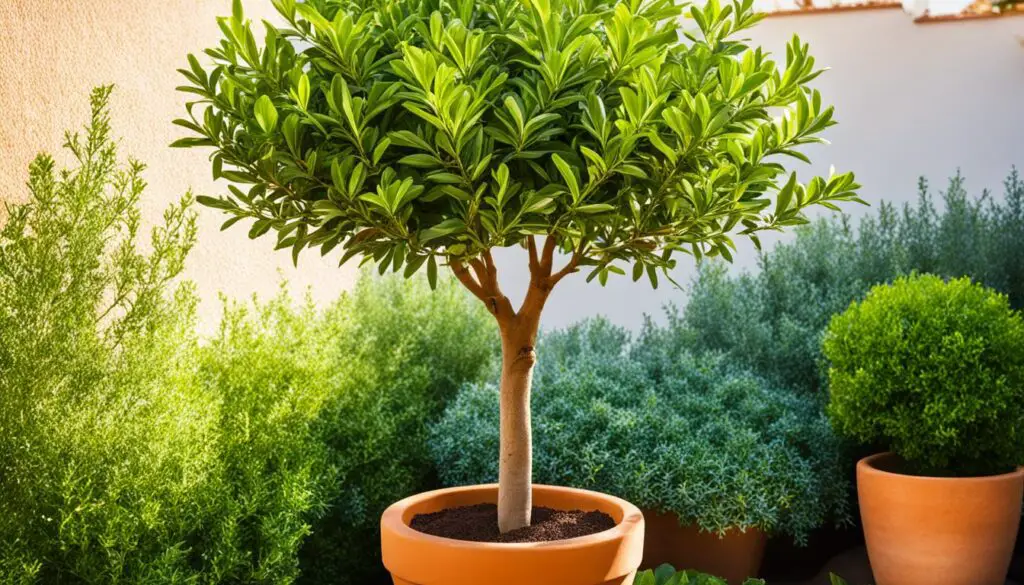
| Bay Tree Soil Requirements | Bay Tree Watering Needs |
|---|---|
|
|
Pruning and Harvesting Bay Leaves
Pruning a bay tree is easy and keeps it looking great. Do it in late winter or early spring, before new leaves grow. Don’t cut off more than a third of the leaves at once. These leaves are key for the tree’s flavor and smell.
To harvest bay leaves, pull them down gently from the stem. This method keeps the leaves whole and ready for cooking. You can dry them in a dehydrator or hang them in a cool, dark spot.
- Prune bay trees in late winter or early spring before new growth appears.
- Avoid removing more than a third of the leaves to preserve the plant’s flavor and aroma.
- Harvest bay leaves by gently tugging them downward for a clean break from the stem.
- Dry harvested leaves in a dehydrator or by hanging them in bunches in a cool, dark location.
| Bay Tree Pruning Tips | Bay Leaf Harvesting Tips |
|---|---|
|
|
Follow these easy pruning and harvesting tips for a lot of fresh, tasty bay leaves. With a bit of care, you’ll enjoy the smells and tastes of your bay tree soon.
Bay Tree Propagation
Growing a bay tree from scratch is rewarding but takes time. Bay laurel (Laurus nobilis) seeds can take up to 9 months to germinate. They grow very slowly. A better way to grow bay trees is from cuttings, which is faster.
Propagating from Cuttings
Propagating bay trees from semi-hardwood cuttings is easier than from seeds. Take cuttings in mid to late summer when the plant is semi-mature. Here’s how to do it:
- Take 6-inch cuttings from green, pliable branches.
- Dip the cut ends in a rooting hormone powder to stimulate root development.
- Plant the cuttings in a container filled with a well-draining potting mix, such as one containing coarse sand, perlite, and coco coir.
- Cover the container loosely with plastic to maintain humidity levels.
- Place the container in a warm location with bright, indirect light.
- Monitor the cuttings and keep the soil consistently moist, but not waterlogged.
- Root development can take 1-2 months, after which the cuttings can be potted up and grown on.
Propagating bay trees from cuttings needs patience and careful attention. Most cuttings may not root. To increase success chances, take more cuttings than you need. Only a few may survive.
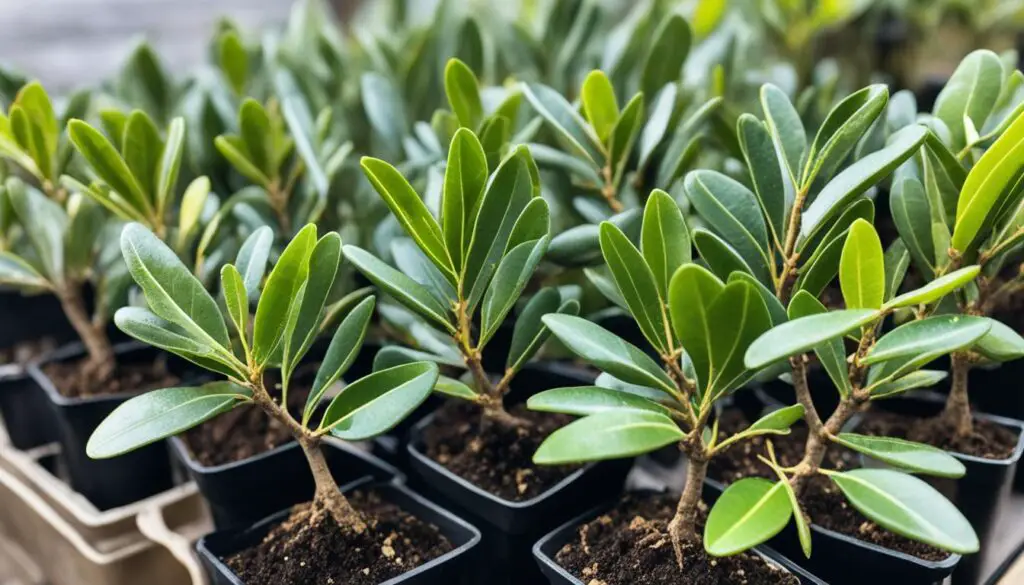
By following these steps and providing the right conditions, you can successfully propagate a new bay tree from cuttings. This way, you can enjoy the aromatic foliage and culinary uses of this versatile plant.
Common Pests and Diseases
Bay laurel plants are usually free from pests but can face issues like scale insects, mealybugs, and spider mites. Look out for signs like discolored leaves, sooty mold, and pests on the plant. To deal with these pests, use horticultural oils or insecticidal soaps thoroughly on all plant parts.
Bay laurels can also get fungal diseases like anthracnose, powdery mildew, and Phytophthora root rot. These diseases show up as leaf discoloration, wilting, and dieback. To stop and manage these, ensure good soil drainage, don’t overwater, and remove affected parts quickly. If it’s severe, you might need to use fungicides.
Identifying and Treating Pests
Aphids and psyllids are common pests that cause leaf stippling and weaken the plant. Neem oil is a safe, organic way to treat them. Boring insects can also harm the tree by tunneling in the xylem. Cutting off damaged shoots helps control this.
Scale insects feed on bay tree leaves and wood, weakening the tree. Neem oil is a good choice for treating them. It’s a safer option than commercial pesticides, especially for plants used in cooking.
Preventing and Managing Diseases
Phytophthora root rot is a common disease that loves wet conditions. To fight it, make sure the soil drains well around the roots. Nitrogen deficiency can turn bay leaves yellow, while too many minerals can cause chlorosis and leaf tip dieback.
Good care like pruning, watering right, and giving the right nutrients boosts the plant’s health. This makes it stronger against pests and diseases. Using natural controls like lady beetles and lacewings can also help fight pests.
In the UK, pests like bay suckers, caterpillars, and scale insects are common on bay trees. Neem oil and insecticidal soap are good natural ways to fight them. If it’s bad, you might need to use chemical pesticides carefully. Keeping up with tree care like watering, sunlight, nutrients, and pruning helps prevent pests.
Culinary and Household Uses of Bay Leaves
I love using bay leaves in my cooking. They’re a key ingredient in many Mediterranean and European dishes. They add a unique taste to soups, stews, sauces, and marinades. Bay leaves make any meal taste better, from beef stews to fish dishes.
Besides cooking, bay leaves have been used for health and as a natural bug repellent. They’re full of antioxidants and can help with diabetes, heart disease, and digestion. You can also use them to keep insects away and make your home smell nice.
Whenever I’m cooking my grandma’s tomato sauce or making potpourri, I always have bay leaves ready. They’re essential in my kitchen and help keep my home bug-free. I’m always finding new ways to use bay leaves, and I love their history and versatility.
FAQ
What is a bay laurel tree?
The bay laurel, also known as the bay tree or bay leaf, is an evergreen native to the Mediterranean. It’s famous for its aromatic leaves used as a seasoning in cooking.
What are the benefits and uses of bay leaves?
Bay leaves add a unique flavor to soups, stews, and marinades. They’re also used for their medicinal and aromatic qualities. These leaves are believed to fight inflammation, act as antioxidants, and have antibacterial properties.
Can bay laurel be grown outdoors year-round?
In USDA hardiness zones 8-10, bay laurel thrives outdoors all year. Choose a spot with full to partial sun and well-draining soil when planting it in the ground.
Can bay laurel be grown in containers?
Yes, growing bay laurel in containers is possible. It’s ideal for those in cooler areas who need to move the plant inside during winter. Use a pot with good drainage and a slightly larger pot than the root ball.
What are the soil and watering requirements for a bay tree?
Bay laurel likes soil that’s slightly acidic to neutral, with a pH of 6.0 to 7.0. Add compost or organic matter to improve drainage and fertility. Water consistently, letting the top inch or two dry out before watering again.
How do I prune and harvest bay leaves?
Prune bay laurel lightly to keep its shape and size. Prune in late winter or early spring. Harvest leaves by gently pulling them from the stem.
How can I propagate a bay tree?
Propagating bay laurel from seeds is slow and tough. You can also use semi-hardwood cuttings. Take cuttings in summer, treat with rooting hormone, and plant in moist, coarse sand.
What are common pests and diseases that affect bay laurel?
Bay laurel may face pests like scale insects, mealybugs, and spider mites. It can also get fungal diseases like anthracnose, powdery mildew, and Phytophthora root rot. Good soil drainage and avoiding overwatering can help prevent these problems.

